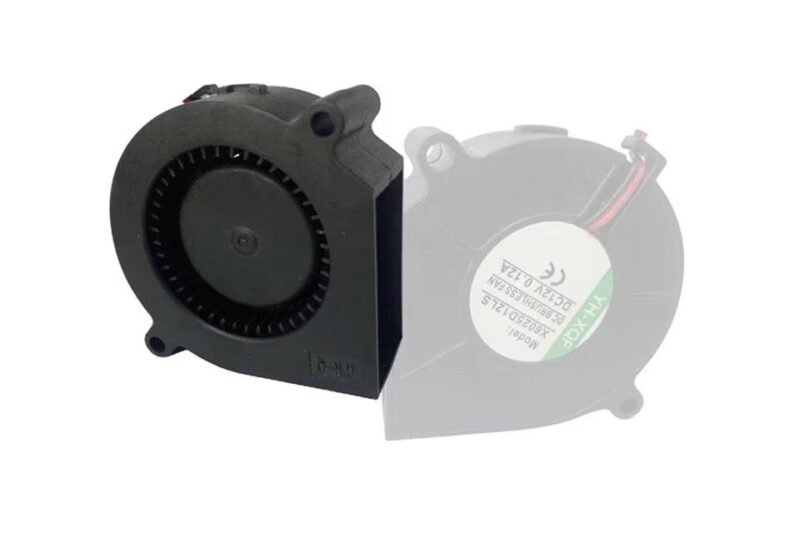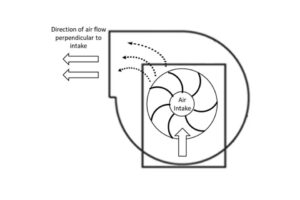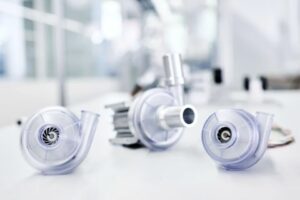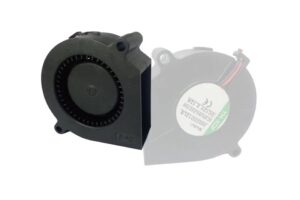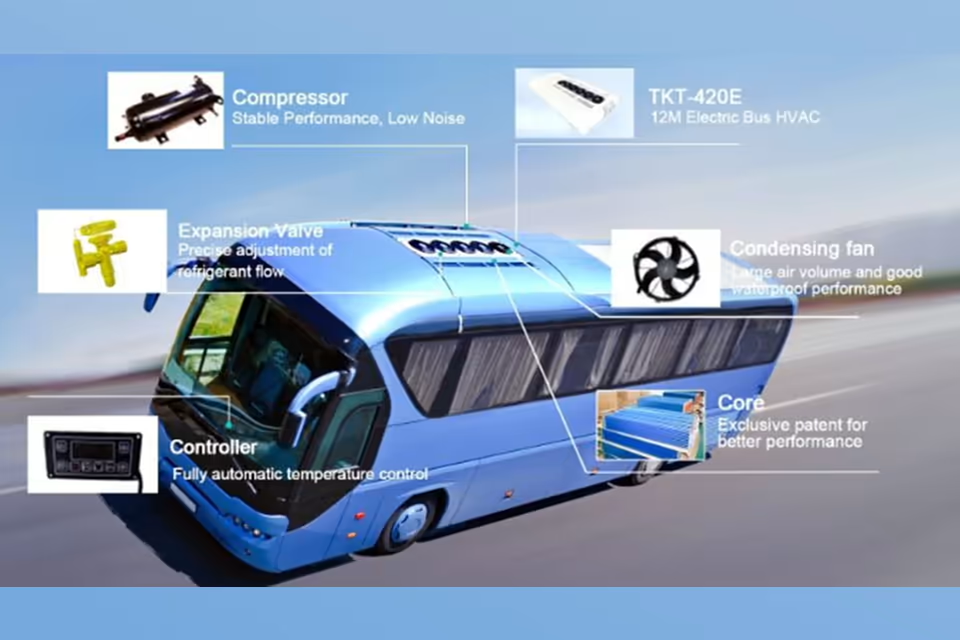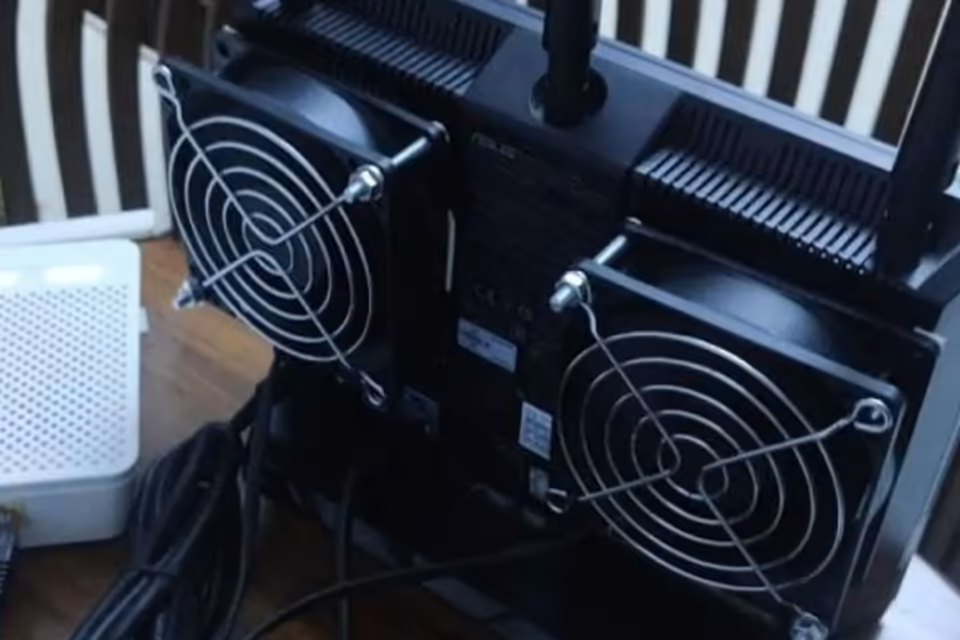A blower is a mechanical device designed to move air or gas through the application of pressure, essential for various industrial, environmental, and agricultural applications. Blowers operate on principles of fluid dynamics, facilitating airflow by either increasing air velocity (centrifugal blowers) or displacing a fixed volume of air (positive displacement blowers).
They are notable for their capacity to generate lower pressures compared to compressors, making them ideal for applications requiring consistent airflow rather than high-pressure output, such as pneumatic conveying, aeration in wastewater treatment, and ventilation in mining.
The significance of blowers extends across multiple industries, from manufacturing and agriculture to environmental management. In wastewater treatment facilities, for instance, blowers play a critical role in providing necessary aeration for biological processes that decompose organic waste. Their versatility is further highlighted in pneumatic conveying systems, where they transport bulk materials efficiently, and in mining operations, where they ensure worker safety by maintaining air quality.
Additionally, modern advancements in blower technology emphasize energy efficiency and reduced noise, aligning with sustainability goals and regulatory standards.
While blowers are integral to numerous applications, they are not without controversies. Issues such as initial cost, operational complexity, and noise levels can deter potential users from adopting advanced blower systems.
Furthermore, the engineering challenges associated with selecting the appropriate blower type, maintaining optimal performance, and ensuring compliance with regulatory standards can complicate their implementation. Despite these challenges, the continued evolution and integration of blower technologies signify their enduring importance in both traditional and emerging sectors.
Types of Blowers
Blowers can be categorized into several types based on their operating principles and applications. The four main types of blowers include positive displacement blowers, centrifugal blowers, regenerative blowers, and multistage blowers, each offering distinct advantages and disadvantages suited to specific operational needs.
Positive Displacement Blowers
Positive displacement blowers function by trapping a fixed volume of air and discharging it against system pressure. These blowers are particularly advantageous for applications requiring consistent airflow across varying pressures. Among the most common types of positive displacement blowers are rotary lobe and helical screw blowers, known for their efficiency and reliability in continuous operations.
A key characteristic of positive displacement blowers is their ability to maintain airflow consistency, making them essential in critical processing environments.
Rotary Lobe Blowers
A specific variant of positive displacement blowers, rotary lobe blowers operate using dual rotors that rotate in opposing directions. This design allows the blower to draw in air and then expel it effectively, making it suitable for various industrial applications where reliable air delivery is crucial.
Centrifugal Blowers
Centrifugal blowers are utilized in applications that require high pressure and variable flow rates. These blowers employ rotating impellers to increase the velocity of air or gas, effectively generating pressure through centrifugal force. Centrifugal blowers are particularly effective in scenarios where large volumes of air need to be moved efficiently.
Multistage Centrifugal Blowers
A subtype of centrifugal blowers, multistage centrifugal blowers are designed to create higher pressures by combining multiple impellers in a series. This configuration allows for more significant pressure generation and air circulation, making them suitable for demanding industrial applications.
Regenerative Blowers
Regenerative blowers generate pressure by displacing air molecules through the rotational movement of the impeller. As the impeller spins, it captures air between its blades, pushing it forward to create airflow. Regenerative blowers are often employed in applications where lower pressure is sufficient, such as in cooling or ventilating systems.
Working Principles
Blowers operate on the fundamental principles of fluid dynamics, utilizing mechanical energy to increase the pressure of air or gas, thereby enhancing airflow. At their core, blowers are designed to draw in air and expel it at a higher pressure, facilitating a variety of applications from cleaning and cooling to material transport.
Core Functions
An air blower increases the pressure of air by reducing its volume in a confined space. Unlike compressors, which typically operate at much higher pressure ratios, blowers generally function under 15 pounds per square inch gauge (psig) and are characterized by their capability to maintain lower pressures while still effectively moving large volumes of air. This makes them suitable for applications that require consistent airflow without the high pressures associated with compressors.
Mechanisms of Operation
Centrifugal and Positive Displacement Blowers
Blowers are primarily categorized into two types: centrifugal and positive displacement. Centrifugal blowers use a rotating impeller to impart kinetic energy to the air, converting this kinetic energy into pressure as the air is forced through the blower’s casing.
Conversely, positive displacement blowers operate by trapping a fixed volume of air and forcing it into a discharge line, generating higher pressures through mechanical compression. This distinction allows engineers to select the appropriate type based on specific operational requirements and constraints.
Performance Metrics
Several performance metrics are critical for evaluating blower efficiency. These include the pressure coefficient, which is defined as the ratio of the difference between the static and total pressures at the inlet and exit of the blower, respectively.
Additionally, side channel blowers are often evaluated based on their pressure output, typically measured in millibars (mbar) or pounds per square inch (PSI), which indicates their ability to move air through various systems without causing damage to materials being transported.
Advanced Technologies
Modern blowers are often equipped with advanced features aimed at optimizing performance. For instance, some systems incorporate closed-loop control mechanisms that utilize sensor feedback to adjust operational parameters, such as motor speed and valve settings, thereby maintaining consistent airflow and pressure.
Moreover, energy recovery techniques can further enhance efficiency by reusing excess air, reducing overall energy consumption while maximizing performance.
Applications of Blowers
Blowers are integral to numerous industries and applications, serving various purposes related to air movement, ventilation, and environmental management. Their versatility is showcased across multiple sectors, including manufacturing, agriculture, and environmental remediation.
Industrial Applications
Wastewater Treatment
In wastewater treatment facilities, blowers are employed to provide aeration in tanks, promoting the growth of bacteria that decompose organic waste. This process relies on the introduction of large amounts of compressed air, which is vital for maintaining the oxygen levels necessary for bacterial activity and ultimately ensuring the effective breakdown of pollutants.
Pneumatic Conveying
Blowers are essential in pneumatic conveying systems, where they efficiently transport dry bulk materials, including powders and granules, across production lines. This application is particularly prevalent in industries such as food processing, pharmaceuticals, and cement production, where maintaining a contamination-free environment is crucial.
Ventilation in Mining
The mining industry utilizes blowers for ventilation in underground operations. These systems help remove harmful gases, such as methane, and ensure the safety of workers by providing a steady supply of fresh air. The robustness and reliability of blowers are essential in this demanding environment.
Cement Manufacturing
During cement production, blowers play a critical role in managing the gases emitted during the heating of raw materials in a kiln. Effective air management not only facilitates the blending process but also ensures compliance with environmental regulations regarding emissions.
Environmental Management
Dust Control
Blowers are widely used in industrial dust collection systems, particularly in woodworking, metal fabrication, and pharmaceuticals. They facilitate the movement of air and contaminants through a network of filtration units, ensuring compliance with OSHA and EPA regulations aimed at protecting worker health and safety from airborne particulates.
Soil Vapor Extraction
In environmental safety applications, blowers are utilized in soil vapor extraction systems to eliminate hazardous gases and toxins from contaminated soil. By creating negative pressure in wells, these systems effectively extract and treat harmful vapors at the surface, contributing to site remediation efforts.
Agricultural and Landscaping Applications
In landscaping, blowers, particularly electric models, have transformed practices by providing robust performance with zero emissions. They have become essential for maintaining air quality while ensuring efficient leaf and debris management, promoting sustainability within the industry. As electric options become more prevalent, they are recognized for their reduced noise pollution and environmental impact compared to traditional gas-powered models.
Advantages and Disadvantages
Advantages of Blowers
Blowers, particularly advanced air knife systems, offer numerous advantages that enhance operational efficiency across various industries.
Improved Product Quality
One significant benefit of air knife technology is the enhanced precision it brings, leading to improved product quality. Precise airflow and pressure control ensure uniform drying, cleaning, or cooling of products, resulting in higher consistency and fewer defects. This reliability translates into greater customer satisfaction and a stronger reputation for businesses.
Reduced Maintenance
Advanced blower systems often require less maintenance due to their efficient operation. With optimized controls, these systems experience reduced wear and tear, leading to fewer maintenance needs and downtime, ultimately saving businesses time and money.
Customization and Adaptability
Different applications necessitate varying air velocities and pressures. Advanced air knife systems offer customization options that allow them to be tailored for specific tasks, whether for delicate electronic components or robust industrial machinery. This adaptability enhances their effectiveness across multiple applications within a single facility.
Labor Savings
Traditional blower systems often demand skilled operators to manage them manually. In contrast, automated advanced systems reduce the need for extensive manual labor, allowing operators to focus on more critical tasks. This shift leads to labor savings and enables the redeployment of skilled personnel to value-added roles.
Environmental Benefits
The reduced energy consumption of modern blowers contributes to a smaller carbon footprint, aligning with corporate sustainability goals and environmental regulations. This not only helps companies avoid potential fines but also promotes a greener industrial operation.
Disadvantages of Blowers
While blowers provide numerous advantages, there are also disadvantages that users should consider.
Initial Cost
The upfront investment in advanced blower systems can be substantial. While they offer long-term savings through reduced maintenance and energy efficiency, the initial costs may deter some businesses from making the switch from traditional systems.
Complexity of Operation
Advanced blowers with automated systems can be more complex to operate and may require specialized staff training. This complexity can lead to a learning curve and potential operational challenges during the transition period.
Noise Levels
Some blower systems may generate significant noise, which can be a disadvantage in noise-sensitive environments. While certain models are designed for quiet operation, others may require additional soundproofing measures to mitigate noise pollution.
Potential for Malfunctions
As with any mechanical system, blowers are susceptible to malfunctions, particularly if regular maintenance is neglected. Effective preventive maintenance is crucial to avoid costly operational disruptions and ensure longevity.
Selection Criteria
When selecting a high-pressure blower for industrial applications, it is crucial to consider various factors to ensure optimal performance and efficiency. Improper selection can lead to energy waste, increased operational costs, and inadequate system performance. Below are the key criteria to consider when choosing the right blower.
Key Factors to Consider
Application Requirements
The specific task at hand is the primary consideration in blower selection. Understanding the requirements of the application will guide the decision-making process and help in selecting a model that meets the desired performance metrics, such as airflow and pressure requirements.
Airflow Rate (CFM)
Establishing the required airflow for the application, typically measured in cubic feet per minute (CFM), is essential. Accurate calculations of airflow needs will inform the size and type of blower that is best suited for the intended use.
System Resistance
It is important to account for the resistance encountered in the connected ductwork, filters, and other components. Selecting a blower that can generate the required airflow while overcoming system resistance will ensure efficient operation and prevent premature wear on the motor.
Energy Efficiency
Energy efficiency is a vital aspect of blower selection, as it can significantly impact long-term operational costs. Modern blowers are designed to maximize output while minimizing energy consumption, making them more cost-effective over time.
Material Compatibility
Considering the materials of the blower about the specific type of air or gas being handled is critical, especially in environments that may be corrosive or involve high temperatures. Ensuring material compatibility helps maintain the performance and longevity of the blower.
Available Space and Installation Environment
The physical space available for installation and the environmental conditions where the blower will operate should also influence the selection. Different motor types and blower designs may be more suited for specific environments, affecting efficiency and reliability.
Pressure Rating
Understanding the pressure requirements is essential, as static pressure refers to the resistance air encounters while moving through ductwork and components. Factors like altitude and temperature can affect this performance metric, so these should be carefully considered during selection.
Key Performance Metrics
In evaluating blowers for high-pressure applications, several critical performance metrics must be considered. These metrics provide insights into the efficiency and effectiveness of the blower in various operational conditions.
Flow Rate
The flow rate measures the volume of gas that a blower can handle per unit time, commonly expressed in cubic meters per second (m³/s) or cubic feet per minute (CFM). This metric is essential for understanding the blower’s capacity to meet the demands of specific applications, such as pneumatic conveying or HVAC systems.
Efficiency
Efficiency is defined as the ratio of the actual work done by the blower to the energy input. It is typically expressed as a percentage, indicating how effectively the blower converts energy into airflow. High-efficiency blowers are critical in reducing operational costs and energy consumption in high-pressure applications.
Pressure Ratio
The pressure ratio is a fundamental parameter that indicates the relationship between the outlet pressure and the inlet pressure of the blower. It is crucial for assessing the performance capabilities of the blower, as a higher pressure ratio typically correlates with a greater ability to generate necessary airflow and overcome system resistance.
Brake Horsepower Curve
The brake horsepower (BHP) curve represents the relationship between the horsepower required to move a certain volume of air and the airflow volume at a specific fan RPM (revolutions per minute). Understanding this relationship is vital for selecting the appropriate motor size and ensuring optimal energy consumption during operation.
Fan Curves
Fan curves graphically depict the performance characteristics of blowers under varying conditions, displaying relationships among static pressure, brake horsepower, and airflow volume. These curves aid in predicting how the blower will perform across different operational scenarios, facilitating more informed selections based on specific application requirements.
Tolerances and Standards
Different testing standards, such as PTC-13, CAGI, and ISO, emphasize the importance of tolerances and methodologies in performance measurement. The specific volume ratio tolerance, typically set at +/-5%, is a critical aspect that suppliers and engineers must consider when evaluating blower performance to ensure compliance with industry standards.
By analyzing these key performance metrics, users can make better-informed decisions regarding the selection and application of blowers in high-pressure systems.
Engineering Challenges
The design and implementation of blowers in high-pressure applications present several engineering challenges. One significant issue is the tendency for resulting designs to become oversized, heavy, and expensive to fabricate, test, and transport. This complexity requires engineers to carefully balance functionality with cost-effectiveness.
Regulatory Compliance
Navigating the regulatory landscape is another major challenge engineers face. Compliance with the Department of Energy (DOE) and American National Standards Institute (ANSI) standards is essential for product approval and market entry. These regulations can vary widely by region and application, complicating the design process.
Engineers must assess the costs of compliance against the benefits while remaining informed about evolving regulations to ensure their designs not only meet current standards but also anticipate future changes.
Material and Design Considerations
As the operational pressures of hydraulic equipment increase, engineers encounter several design problems related to material selection and construction. These include the need for heavier, less flexible hoses, advanced sealing materials, and increased attention to reservoir configurations.
Such modifications are necessary to ensure sealing integrity and accommodate components that resonate with greater energy levels, which can result in higher sound pressure outputs. Additionally, improper sizing of blowers can lead to severe system damage; for instance, undersized blowers may cause overheating of motors, while oversized systems can create turbulence that damages sensitive components.
Cost Management and Sustainability
In light of rising operational costs and an increasing focus on sustainability, engineers are encouraged to adopt energy-efficient designs and practices. This shift not only mitigates costs but also contributes to broader sustainability initiatives within the electronics sector. Effective thermal management is critical, especially in compact electronic devices, where overheating can severely impact performance.
Therefore, engineers must carefully evaluate the airflow requirements, pressure resistance, and energy efficiency of blower systems to ensure long-term operational effectiveness and reduced environmental impact.
Maintenance and Troubleshooting
Routine maintenance is crucial for ensuring the optimal performance and longevity of blowers in high-pressure applications. Implementing preventive measures can help avoid unexpected downtime and extend the operational lifespan of twin lobe blowers and other types of fans. Key aspects of maintenance include regular inspections, consistent lubrication, filter maintenance, vibration monitoring, and staff training.
Regular Inspections
Regular inspections should be conducted to check all mechanical components such as rotors, bearings, gears, and seals for wear or misalignment. Accumulated dust and debris can significantly impact airflow and pressure, necessitating timely cleaning to maintain work efficiency. Identifying and addressing minor issues early can prevent costly repairs and unplanned downtime.
Consistent Lubrication
Using the correct lubricant and ensuring it is applied at the recommended intervals is essential to maintain smooth operation and prevent wear of critical components. Maintenance professionals emphasize the importance of checking lubrication levels regularly, especially for bearings, to reduce the likelihood of failure due to insufficient lubrication.
Filter Maintenance
Maintaining clean air inlet and outlet filters is vital to achieving optimal airflow and reducing contamination risks. Blockages within the ductwork or improper fan sizing can also lead to insufficient airflow, making it imperative to investigate and rectify such issues promptly.
Monitoring Vibrations
Excessive vibrations often indicate deeper mechanical problems, such as misalignment or imbalance. Regular monitoring of vibration levels is necessary to identify these issues before they lead to significant operational failures. If an imbalance is detected, reviewing operation and maintenance logs and performing precision balancing actions is recommended.
Staff Training
Training operators and maintenance personnel in blower handling, troubleshooting, and basic upkeep is crucial for effective maintenance practices. Well-trained staff can identify operational inefficiencies and respond to minor problems before they escalate into more severe issues.
Troubleshooting Common Issues
Common problems that may arise with blowers include excessive noise, reduced airflow, and overheating. Excessive noise can often be attributed to loose fittings, unbalanced components, or worn-out bearings. To prevent overheating, ensuring that all components are correctly sized and the airflow is optimized is essential.
By following these maintenance and troubleshooting guidelines, operators can enhance the reliability and efficiency of blowers, ultimately leading to significant energy savings and improved production efficiency in high-pressure applications.
Historical Development
The historical evolution of blowers can be traced back to ancient times, with metallurgy in China appearing approximately 5,000 to 6,000 years ago. The onset of the Iron Age around the 5th century BC marked a pivotal moment when iron tools began to facilitate advancements in productivity, reflecting a significant development in the use of mechanical systems.
The modern concept of blowers, however, began to take shape in the mid-20th century.
During the 1950s and 1960s, innovations in blower technology emerged, particularly with the introduction of portable units like the backpack crop duster, which revolutionized landscaping and agricultural applications. The 1970s and 1980s saw explosive growth in the popularity of blowers, leading to diverse applications across various sectors.
In recent years, advancements in blower technology have emphasized energy efficiency and noise reduction, integrating features such as variable frequency drives and high-efficiency motors. These developments are indicative of a broader trend within the industry, reflecting ongoing research and commitment to sustainability.
Furthermore, the increasing industrial activity in developing regions, especially in the Asia-Pacific region, has driven demand for advanced air handling systems, further showcasing the significance of blowers in contemporary industrial applications.

